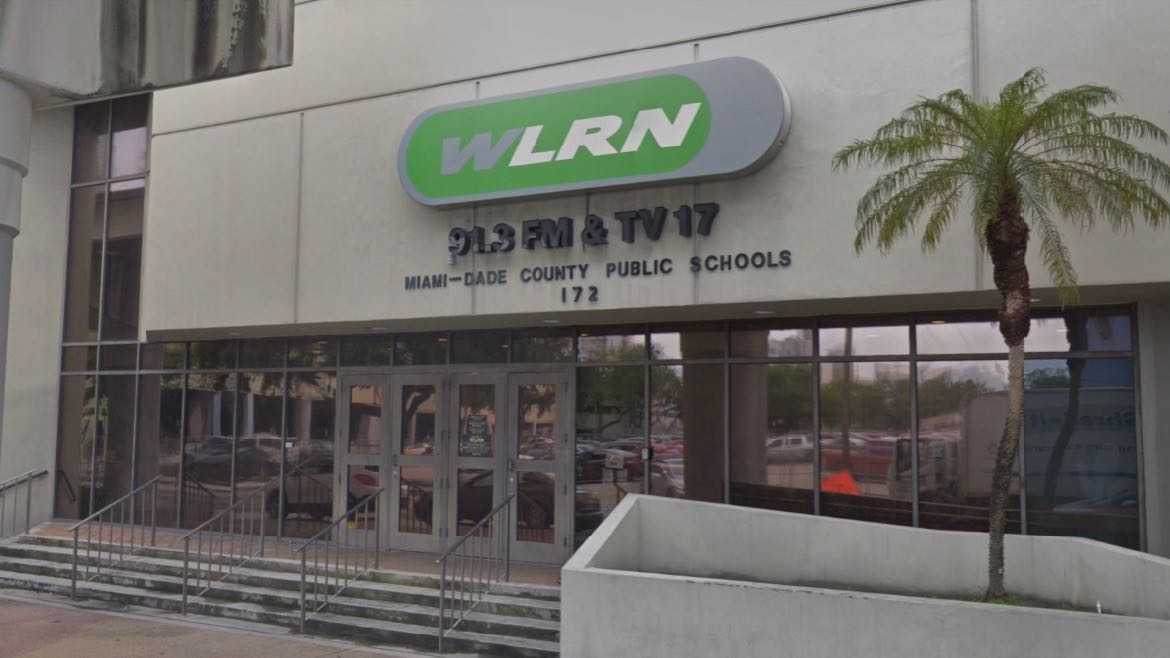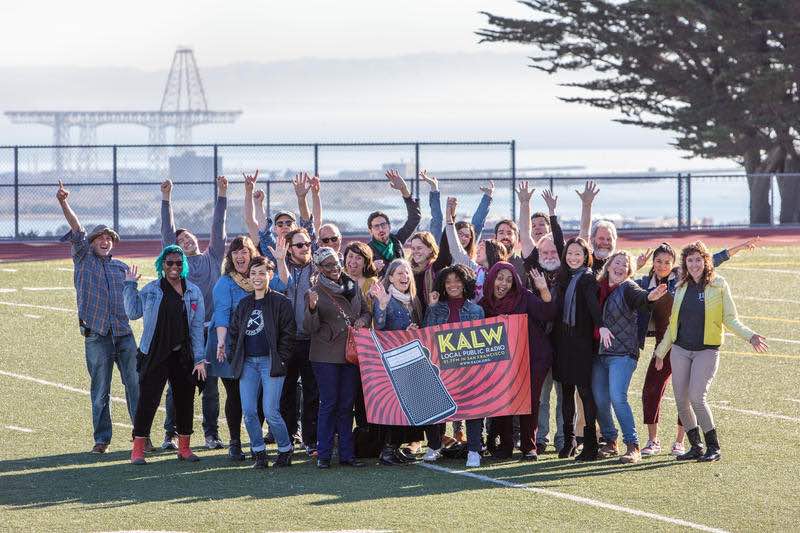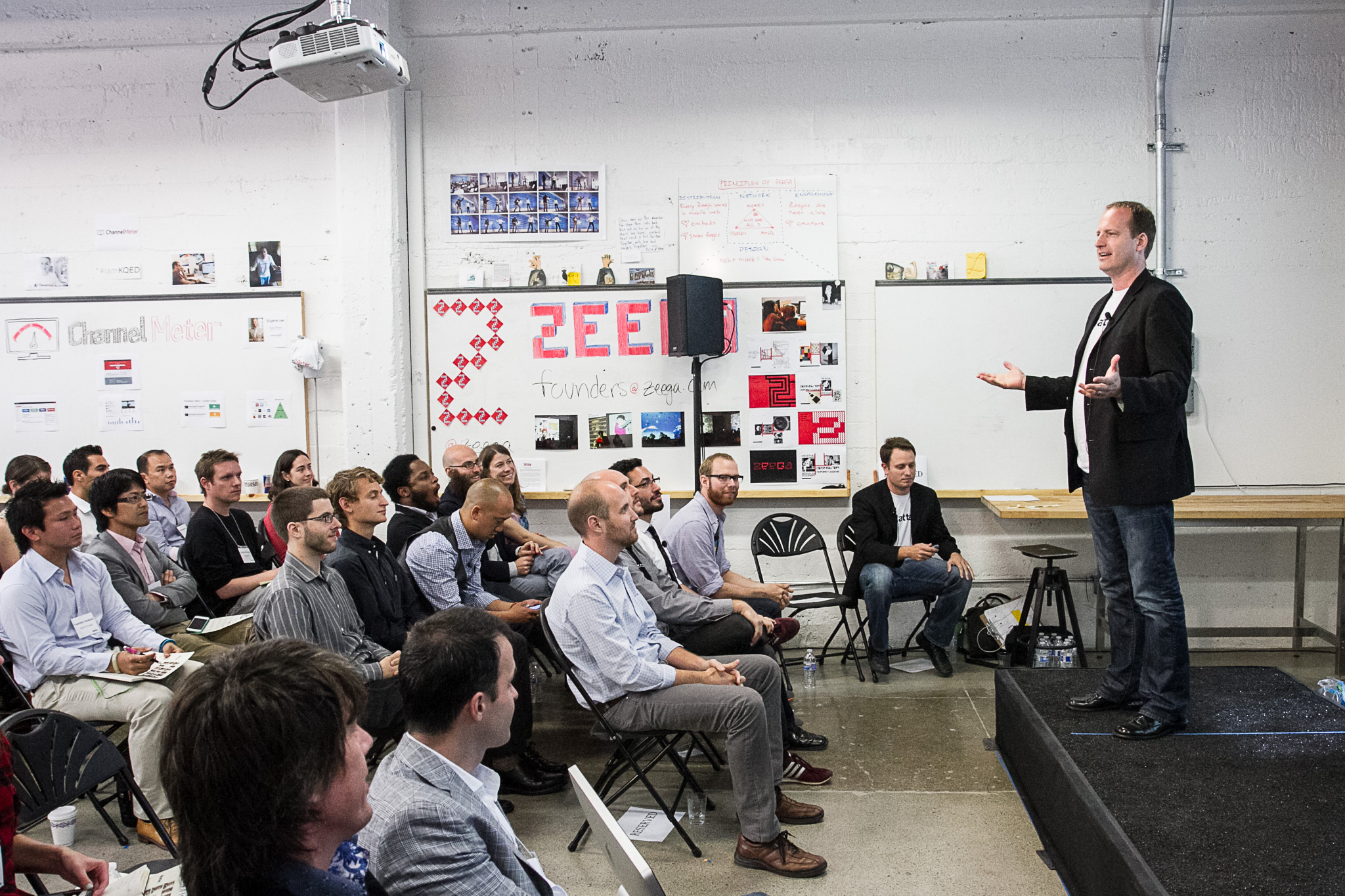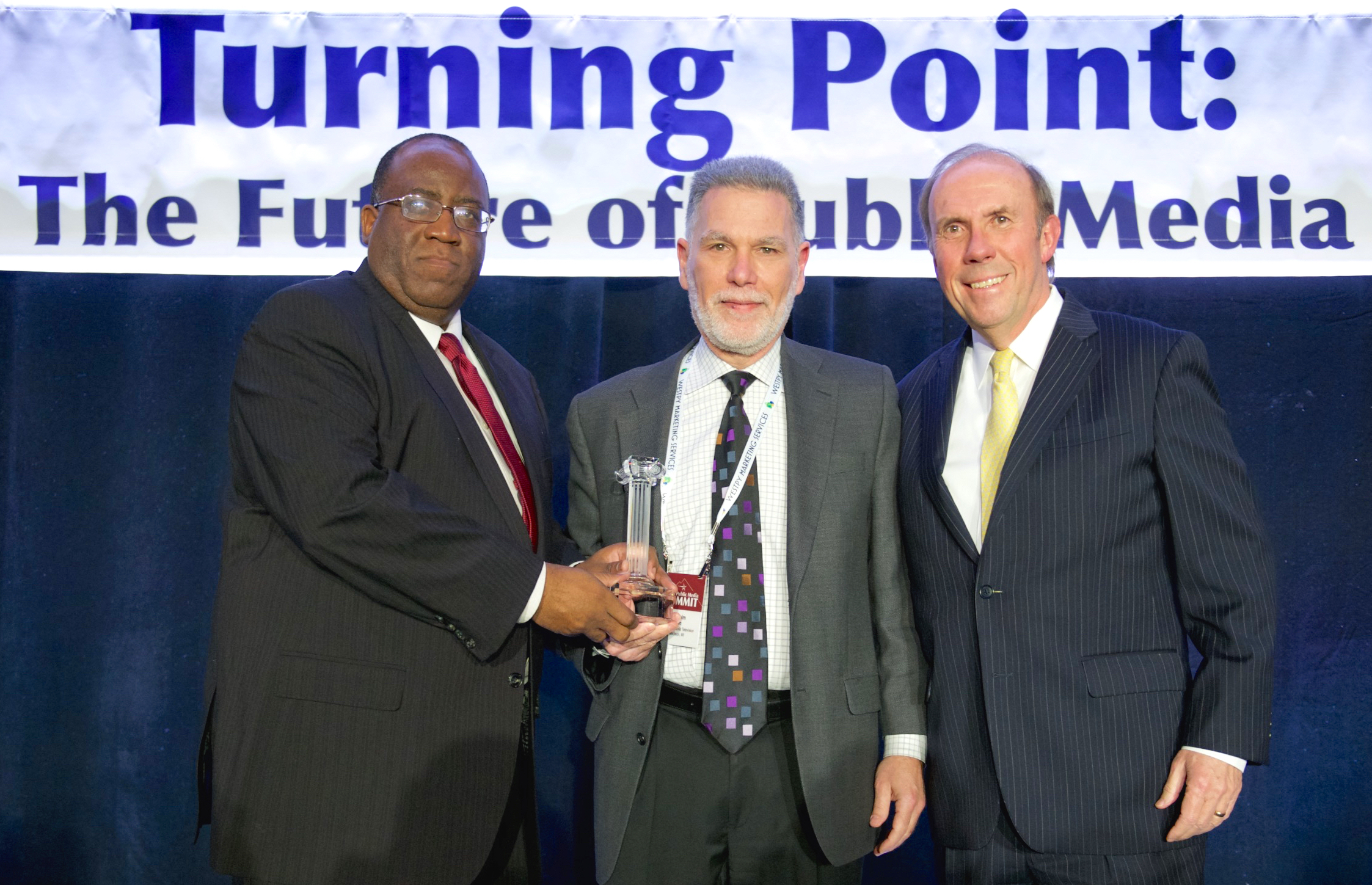National Forum for Public Television Executives: Phase II of creation
Phase II: The Search for Paradigms
Five months before public TV stations voted the Forum into being, this paper was prepared by their facilitators, the consulting firm BMR Associates. Released June 17, 1997.
I. Introduction
During Phase II of Countdown ’97, BMR Associates studied approximately 20 different organizations. The goal of the research was to discover whether other organizations — similar in structure to public television — had established frameworks and processes that enabled them to make decisions and work together in a coordinated manner.
In identifying organizations to explore, BMR focused on organizations that met the following criteria:
- The organization consisted of autonomous units, locally owned and operated.
- Those autonomous units had varying missions.
- Among the membership, there were sub-groups and factions, mirroring the “pluralistic society” BMR found in public television.
- The organization reached collective decisions in an effective manner.
More than two dozen organizations were researched; the following organizations met some or all of the criteria:
- Visa International
- National Association of Broadcasters
- National Association of State Universities and Land Grant Colleges
- Western Systems Coordinating Council
- Indiana Commission for Higher Education
- Minnesota State Colleges and Universities
- NBA
- Western Health Care Consortium
- Integrated Health Care Association
- Technical Computer Graphics
- California Governance Project
- United States Constitution
Findings
The following organizations met all of the criteria listed above. They provide the most useful insights for public television managers.
Visa International
In the 1960s, a number of banks recognized the need for a new form of governance to realize the vision of creating a system of universal monetary exchange. Dee Hock, then at Bank of America, chaired the task force that created Visa as it is structured today.
Today, Visa is a highly decentralized membership organization of 23,000 financial institutions. No central entity owns or controls Visa. Instead, profits are distributed based on the amount of money exchanged.
Visa has multiple regional boards of directors; each board has authority over a geographic or functional area. The entity is largely self-regulating through a clearly articulated set of principles. According to its Hock, this has rendered moot the argument about centralized vs. decentralized authority at Visa.
The process of building Visa started with a small group of key players, 5-10 people, called “framers.” It then expanded to include other representatives called “designers.” To begin, they asked only one question: “What is our purpose.” Until they could articulate it in one or two sentences, they did nothing else.
Once they’d nailed down the purpose, they worked on principles. “What are the rules that should underlie everything we do, the fundamental things we believe about wealth, power, sharing of resources, inclusiveness and exclusiveness.” At this stage, the group only focused on the principles themselves, not on how they would be put into effect or enforced. The over-arching principle they agreed on was that Visa should be as decentralized and self-regulating as possible, while maintaining sufficient organizational structure to be able to act in a coordinated manner when necessary.
After the core purpose and principles were decided, the framers began designing the organizational structure. The entire process took two years — and culminated in a constitutional convention in which the new structure was approved (an 80 percent “yes” vote was required).
This new structure has worked reasonably well. Most decisions are handled by the regional boards, whose 12 members are elected by member banks — three representatives each from small, mid-sized, and large banks. A nominating committee presents a slate of new board members each year to be voted on by the membership. Members serve three year terms; a third of the board is elected each year.
When necessary, some decisions are referred to an international board of directors. This board is composed of one member from each of the regional boards, plus six other members. Guidelines for deciding which issues are handled by the international board are fuzzy; essentially, any issue which the regional boards are unable to resolve on their own gets reviewed by the international board.
National Association of Broadcasters
The NAB was founded in 1923; its members fall into one of four categories — radio, television, associate and international. There are currently 1,027 members, representing 100 percent of networks, 85 percent of affiliates, 44 percent of independents and 41 percent of public stations.
The NAB has two boards, one each for TV and radio. The television board is comprised of 24 members plus the president who is both an employee of the board and a voting member of it. The two boards elect a joint board chair. The joint chair position rotates every two years between TV and radio.
Twelve board members are nominated and elected by the national membership at large. Elections are held annually, with a two-year elected term. Two consecutive terms may be held, at which time a two year hiatus is required before re-election. NAB bylaws do not call for representation by market size. Recent history has resulted in three or four of the twelve elected members from small to medium size markets, with the remaining eight or nine from large markets.
The other twelve TV board members are either standing or designated members. They include one representative from each of the four member networks, one representative from each of the four affiliate associations, and one each from the Television Operators Caucus (TOC) and one from ALTV (an association of independent stations). Additionally, one seat is reserved for women and one for minorities.
Following each election, the board reviews its own membership vis-a-vis fair representation. While there is no formal method for correcting any imbalances, there does seem to be an effort to maintain an appropriate balance. This effort is largely made during the nomination process to at least ensure the possibility of equal balance. In order to ensure that all members have at least one board member who they feel is attuned to their concerns, the NAB staff assigns each of the elected members to a 4-5 state region. Efforts are made to see that the board member has a personal tie to the region to which he or she is assigned.
The NAB has numerous committees, which are comprised of members appointed by the president and joint board chair. After discussion in committee, proposals generally go to the nine-member executive committee, comprised of six voting members: the president, the joint board chair and vice chair of both the TV and radio boards, plus two non-voting members, generally the past board chair and a rotating TV network representative.
Executive committee decisions then go the appropriate board for ratification before being presented to the membership at large. (Board votes are “one man one vote” and require a simple majority.)
The National Association of State Universities and Land Grant Colleges
NASULGC currently represents 192 institutions of higher learning. Its purpose is to help member institutions clarify their common goals and maximize awareness about and interest in areas ranging from scientific research to student aid. Its function is a combination of consensus building and lobbying.
The structure provides an interesting example of an organization in which significant power is vested in a president, yet balanced by a complicated system of councils and commissions.
Within NASULGC there are ten councils, each of which focuses on a single topic (e.g., technology). Each university has one voting representative on these councils — typically, a high ranking university official in the subject area. Therefore, each council has 196 voting representatives. Each council selects an executive committee of 15 members, which manages council business and selects a slate of candidates for chair.
Within NASULGC there are also six commissions, which are inter-disciplinary and academic in nature. Again, each university has one voting representative, for a total of 196 voting members. Commission members appoint delegates to the executive committee, which then elects a chair from a slate of candidates compiled by the executive committee.
These sixteen chairs, along with nine other members selected by the president of NASULGC, comprise the Board of Directors. The president is an employee of the board. All actions made by the organization emanate from this board. The president polls the board as to their thoughts on particular issues, commissions research, makes recommendation, and then calls for a vote. The board relies heavily upon the president to guide them in their decision-making process. One person interviewed described the board as the president’s “sounding board.” While he does sit at board meetings, the president does not have a vote. The president has a staff of 34 people.
In addition to these sixteen groups, there is also a Council of Presidents, made up of the 192 university presidents. Meetings are very private; it serves as a forum for discussion, and as an advisory council to the president of NASULGC, who hand picks the chair of the Council of Presidents.
The Western Systems Coordinating Council
The Western Systems Coordinating Council was established in the 1940s to help move electricity from where the supply was cheapest to where the demand was greatest throughout the Western states. It has no regulatory authority. Its members are the sixty or so utilities that generate and transmit the power. It’s been described as “a voluntary organization running the biggest electrical generator in the world.”
The council makes its decisions in three ways:
- At the annual meeting, votes are taken on major issues, like the annual budget and major operations. Typically, sufficient consensus exists, and a show of hands is all that’s necessary.
- Four standing subcommittees meet regularly throughout the year; meetings rotate around the region; any member can participate in any committee.
- Mail ballots are taken on issues that need decisions right away and cannot wait for the annual meeting.
There are three types of members, and when a utility joins, it declares what type it is based on its size and ownership structure. The 46-member board consists of ten representatives from each type, plus 16 additional members so that virtually every state is represented.
In 1995 the council began monitoring its members’ compliance with its operating guidelines, reviewing 15 utilities per year. The program was triggered by concerns that the organization needed more oversight. But where problem are uncovered, the council cannot levy penalties. Instead it must rely on peer pressure to get violators to fix problems.
Indiana Commission for Higher Education
The Indiana Commission for Higher Education, with an estimated annual budget of $1.5 million, is a non-profit organization that was legislated into existence in 1977. The commissioner and the fourteen members of the commission are all appointed by the state governor. Twelve of the members are from the community at large, one is a student and one a faculty member. For all matters that come before the commission, a majority of those present decides the vote.
The commission advises the governor and the General Assembly on issues pertaining to the seven public higher education institutions in the state. It offers the opportunity for a fair, unbiased and, ideally, non-politicized assessment of major issues. An example of one of the more troublesome subjects addressed by the commission is the consideration of new campuses and secondary education centers. University presidents and Boards of Trustees would clearly be far less inclined than an independent commission to make the difficult choices necessary for the health of the statewide system.
Once an issue comes up for review, the commission staff (currently numbering 15) does its due diligence, considering all sides of the issues and talking with the involved parties of the member institutions. During the course of the process, the staff (generally senior level) communicates with the staff members of the four legislative caucuses and the governor (who is, effectively, a fifth caucus). All efforts are made to address problematic issues during the process to maximize consensus.
After completing its analysis, the staff brings its recommendation to the commission members for discussion. Once a consensus has been reached and a vote taken, the recommendation is communicated to the President Pro-tem of the Senate, the Speaker of the House and the Governor in writing. (The letter itself is basically a formality, since its contents are already known as a result of previous verbal communications.)
The recommendation is then presented to the General Assembly, after which any member can propose an initiative. A bill (or bills) then goes to committee and through the legislative process, until it returns to the floor for a final vote. In point of fact, most recommendations from the Commission are codified without lengthy discussion in the General Assembly; the work has been done effectively at the staff (and lobby) level, so that by the time it reaches the full body, consensus has been maximized.
Given that the Commission is a “coordinating board” that serves in an advisory capacity (as opposed to a true “governing board” ), success is to a large degree dependent on how well connected the board members are to the governor, and how well respected they are by the Assembly. If it is believed that all issues were put on the table and fairly discussed, the process works far more smoothly and consensus is reached more easily. As the Deputy Commissioner put it, “we only have the authority to encourage.”
One final note: commission meetings are open and public. In addition to commission members and key staff members, meetings are often attended by institution presidents, trustees, faculty association members and student representatives. There is always an opportunity for interested parties to be heard and to have their questions answered and concerns addressed.
III. Other Paradigms
The following organizations did not meet all the criteria, but provided useful insights.
The Natural Step
The Natural Step began in 1988 in Sweden. A cancer physician, Dr. Carl Henrik Robert, was frustrated by what he perceived as a lack of coordinated action in dealing with environmental problems. He felt action to protect the environment was being held back by bickering about peripheral details. He likened it to monkeys in a dying tree, arguing about the color of the leaves instead of focusing on the tree itself.
Robert set out to see if he could build consensus among scientists, teachers, artists, and business people so that Sweden could deal with environmental problems in a unified way. His fundamental insight was that agreement on a core set of environmental principles was the key to gaining support for more specific measures. Through an iterative process of writing and rewriting these core principles, he ultimately developed a document that received the endorsement of the scientific, educational, and business communities in Sweden, as well as the endorsement of King Gustav. He called this program the Natural Step.
The process of consensus he used was simple on the surface. He wrote a document. He circulated it to the various groups. He invited criticism. He incorporated those criticisms into new drafts. He re-circulated it. And, after 21 drafts, he got an agreement from everyone.
Robert emphasizes that people need to agree on a set of non-negotiable rules in order to act effectively. In this case, he accomplished it by flipping the conversation about the environment from “how much pollution is too much?” to “what fundamental truths can we agree on?”
In 1991, Britain’s Institute for Social Inventions awarded Robert its prize for social invention. “Dr. Robert’s most significant social invention is his method for achieving consensus on tricky, complicated, often highly scientific matters in a way that does not reduce agreement to the lowest common denominator, but that actually produces rather radical position statements.”
Today, the Natural Step has chapters in the U.S., Australia, Canada, and throughout Europe.
The NBA
The NBA is a franchise organization comprised of 29 teams. Before being awarded a franchise, a potential team must agree to an extensive list of requirements, such as the size of the arena, the number of tickets that will be sold, what percentage of television income will be returned to the NBA and playing rules. The organization coordinates the scheduling of games and an agreed upon set of rules, but there are obviously many other areas where the teams work together and benefit mutually.
The NBA has a constitution that has evolved over 50 years. The team owners, each with one vote, represent themselves on the Board of Governors. They elect a commissioner, who at the present has a strong leadership position. Some issues are decided by a simple majority (such as a change of city), while others require a three quarters vote (rule changes). There are 8-10 committees (e.g., Finance, Labor, Rules, Expansion) which work together to bring recommendations to the full board; discussion is open, the vote is final and binding on all members. Individual teams may lobby the others and bring a specific topic up for review and vote at a later date. (Note: an effort is made when selecting committee members to represent franchises of varying sizes.)
The NBA organizational system would appear to work fairly smoothly, although given the competitive nature of the membership, loopholes are forever being sought. Some particularly thorny issues that the board has faced include collective bargaining, the rules governing contracts, and actual game rules.
Technical Computer Graphics (TCG)
This is a voluntary collective of software companies in Australia that has forged agreements about how to share expertise and knowledge. It is interesting as an example of how well-understood agreements allow behavior to be guided not by a centralized authority but by principle. For example, TCG companies can form alliances outside the cooperative, but only with full knowledge of members and opportunity for competitive bidding by internal partners first.
California Governance Consensus Project
The goal of the California Governance Consensus Project is to get various organizations from all sides of the political spectrum to define common goals so that they can reorganize and reform California’s fiscal management system — e.g., taxing and spending. It is interesting to note that all members have agreed to the principle that discussions are private until a consensus is achieved.
U.S. Constitution
The process of designing the Constitution of the United States sheds some useful insights. These notes are based on readings of Madison’s notes at the U.S. Archives and the book “Decision at Philadelphia.”
The delegates to the Constitutional Convention in 1787 thought their Case for Change was very compelling. Shay’s Rebellion, the failure of federal government to protect commerce, the failure of the states to collect and pay taxes to the federal government, Indian uprisings, all created the need for greater national power. In fact, it was widely believed that if the Convention failed, the Union would dissolve and each state would be a power unto itself.
One of Madison’s crucial insights — a broad departure from political thinking at the time — was that the new federal government should be the servant of the people who would remain its master; it would not be a government resulting from a contract between the states. Thus the people themselves have a very strong voice in the Constitution, whereas the states have a relatively weak voice.
As every student of American history knows, it was recognized from the outset as necessary not to trust in the innate good nature of men, but to provide a system of checks and balances. The delegates — particularly Madison — assumed that voters will not always choose wisely, or that legislators will not always act above self-interest. Thus in the House resides impeachment powers, the ability to declare war, the ability to make treaties, the power to initiate legislation; in the Senate lies the power to confirm judges and to hear cases of impeachment; in the Presidency lies the power to make war (but not declare it); and in the Supreme Court lies the power to review laws.
In determining representation, Madison argued strongly that representation in Congress should be based on population. That certain states would have more power than others was a radical notion at the time, and it faced serious opposition. It became the single most contentious issue at Philadelphia.
The delegates to the Philadelphia Convention employed two rules considered vital to its success. First, they often voted as “a committee of the whole.” In essence, this was a non-binding vote on a specific resolution that enabled the delegates to move to the next resolution with a sense of where things stood. It gave delegates an opportunity to un-do their decisions — when they voted later as delegates to the Convention — if these informal votes proved not to their liking. This created many opportunities for compromise between the large and small states. Had this rule not been in affect, Constitutional scholars agree that the convention would have failed.
Second, all discussions were treated with utmost confidentiality. No one was allowed to discuss the proceedings. Even in the sweltering heat of July in Philadelphia, the windows of the second floor meeting room were kept closed, lest citizens milling below overheard the debate.
Experts say the Constitution, despite its many virtues, is still flawed in four areas: (1) delegates failed to foresee the race problem for what it was; (2) delegates failed to resolve the ambiguity of state powers; by leaving to the states considerable power, Congress is often torn between state and federal interests; (3) delegates failed to deal with judicial review adequately; as a result, the Supreme Court has arrogated significant power to determine social policy that the Founders would have lodged in the Legislature; (4) the mechanism of the electoral college makes it possible for a president to be elected without receiving a majority of votes cast by the people.
IV. Other Observations
Other findings from the research that are of potential use to public television:
Membership/Compliance
Membership is automatic in certain organizations — e.g., Visa, the Indiana Commission of Education, the NBA. Decisions of representative bodies are binding on these groups.
Membership is voluntary in other organizations — e.g., NAB, the National Association of Land Grant Colleges. Members are not required to take an action based on the board’s decisions.
Rules/Protocols
Robert’s Rules of Order prevail on most boards and representative bodies. A simple majority of members constitutes a quorum. Two-thirds vote is required to suspend the rules.






